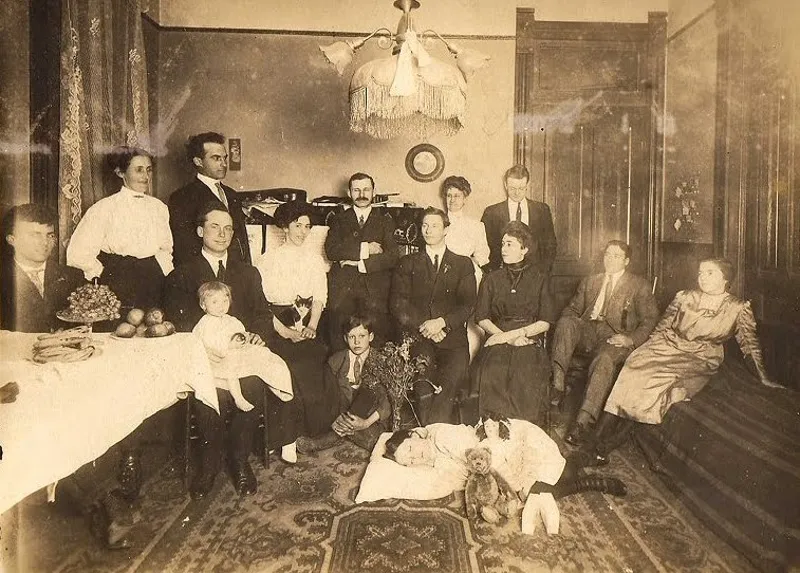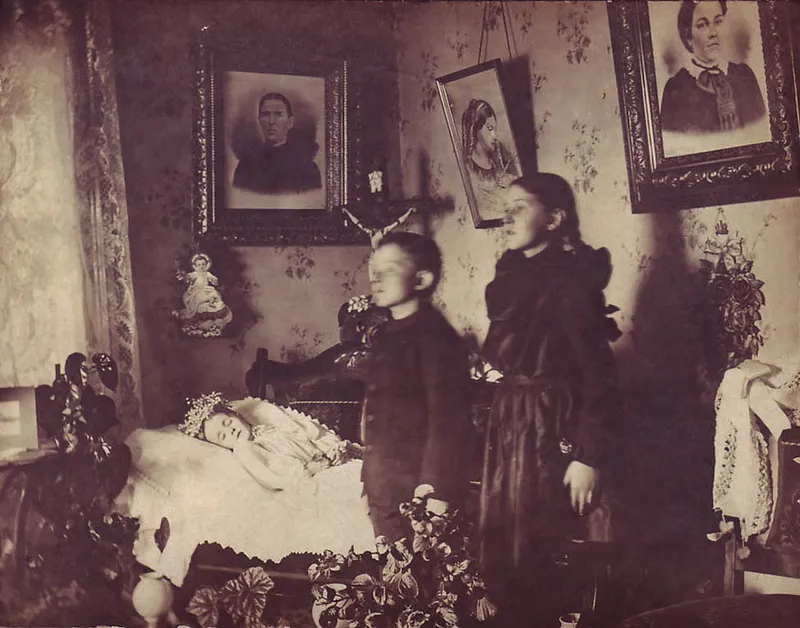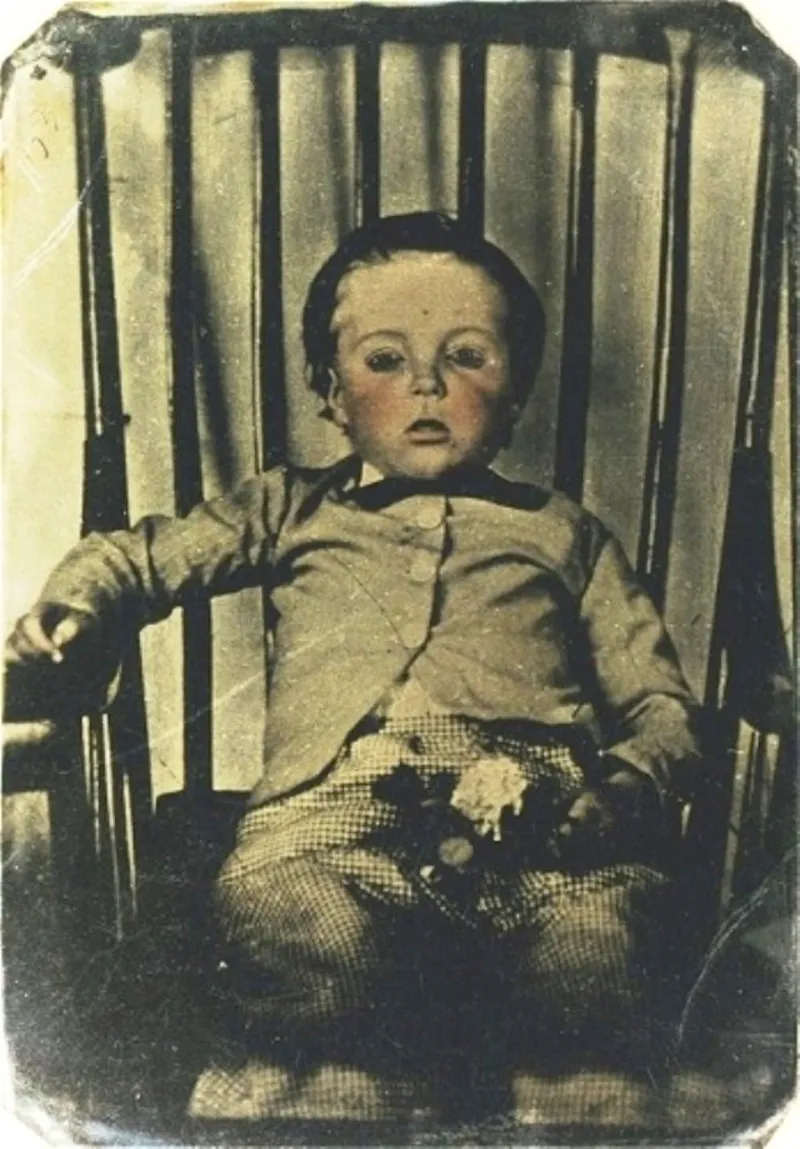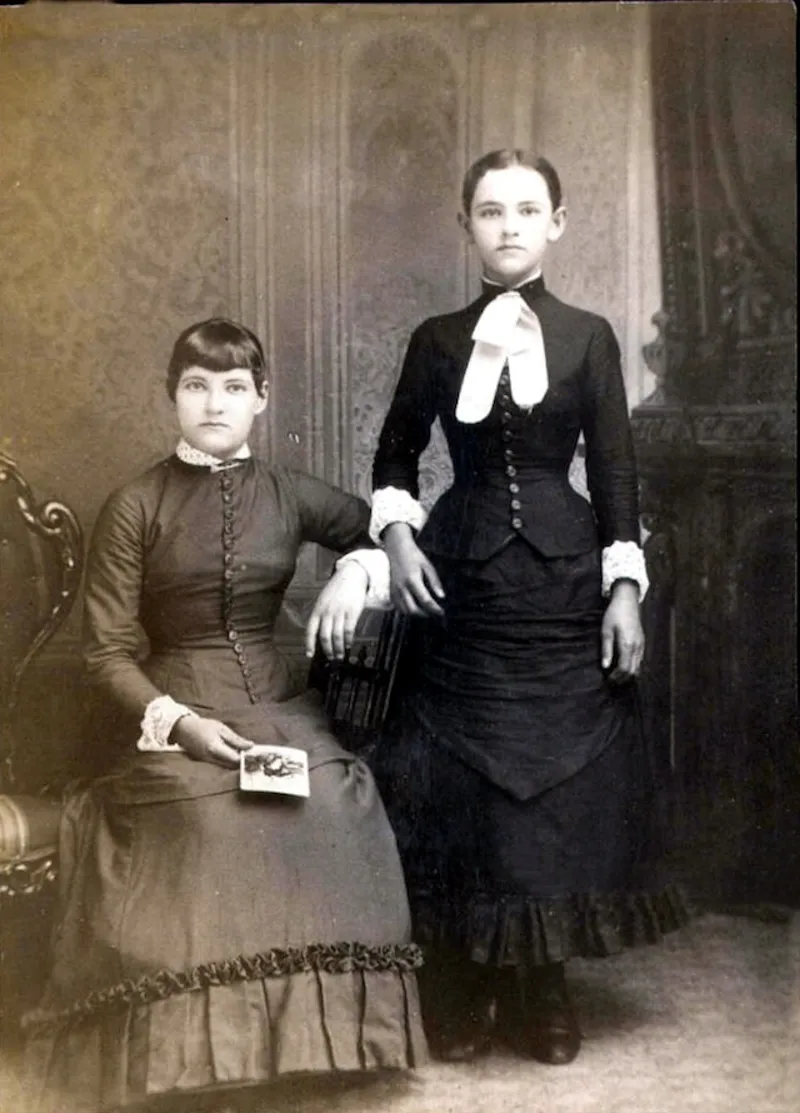Into the Death Room
By: Manny Carbajal
During the Victorian period (1837-1901), diseases like typhoid, cholera, influenza, measles, diphtheria, scarlet fever, tuberculosis and rubella plagued society, causing many to suddenly die. Most children did not reach the age of five, and many mothers died while giving birth. Grieving families generally wanted to spend a little more time with the dead before burial—and it was common practice to store the body in the parlor—the front room of the house. During this time, the parlor was appropriately renamed "the Death Room."
Victorian Era mourning customs were heavily influenced by Queen Victoria's response to Prince Albert's untimely death. A morbid obsession around death emerged during this time. She set the tone and introduced a whole new set of death customs that much of the western world still follow today—like wearing black to funerals. Distinct mourning periods followed that had their own rituals. Families would typically hold viewings in their parlors, a tradition that later gave funeral homes their name.
According to BBC news "...In the mid-1800s photography was becoming increasingly popular and affordable—leading to memento mori photographic portraiture" (or post-mortem photography).
Families employed photographers to take family portraits with deceased relatives in their death rooms before sending them to their graves. The dead were dressed in their best outfits and posed carefully to maintain their likeness. Once photographers finished developing the daguerreotype (a type of silver plate photograph), eyes were painted on, and blush was added to the cheeks to make the dead appear alive again.
Americans in the 1800s were more comfortable with death than people are today. Most of this was out of necessity–before embalming procedures became common, it was the family's duty to prepare the body for viewing and burial.
According to the Clare Barton Museum, "the birth of the funeral industry in the early twentieth century and the growth of large, sanitized hospitals brought about a shift in the way Americans interacted with death."
During this time, the Death Room began to be referred to as the living room.
In Latin America, it is customary to bury a loved one within 36 hours of their passing. Wakes are held at home so friends and family can visit and say their last goodbyes. The body is typically placed in the front room of the house—most likely the living room.
I remember this being the case with my grandmother. She passed away in El Salvador, and her embalmed body was placed in a living room altar for her wake. I still recall examining the texture and color of her skin, the cotton placed inside her nostrils, and the thick brown fibers of the Franciscan nun robe that she was laid to rest in. This, however, brought together hundreds of members from my grandmother's community to say goodbye.
Today, my family's living room is scattered with portraits of dead relatives, religious candles and statues of Roman Catholic icons in distress. The empty dead space this has become makes me think of how it has changed during my lifetime. Many American living rooms are not used the way they once were—so it is common they get converted into offices or just another bedroom. New home builders have noted this trend and updated floor plans by removing living rooms entirely or replacing them with "great rooms"— a space that combines living room and dining room functions.
The COVID-19 pandemic has distanced us from one another and restricted many family gatherings inside our homes. An epidemic has once again impacted the way we socialize in this space. I imagine many Americans grieved in the living room during the pandemic—perhaps on their phones, visiting the social media page of someone they lost to the virus. I know I did.
All the divisiveness surrounding this pandemic has damaged many family relationships beyond repair. Will this be the nail in the coffin for the living room? Or will it bounce back and return to an area where we invite, greet, listen, share, engage and entertain—a place that helps bring us together. Or maybe it will go through another name change that fits the social void it is becoming today.
Photo courtesy of Gizmodo





